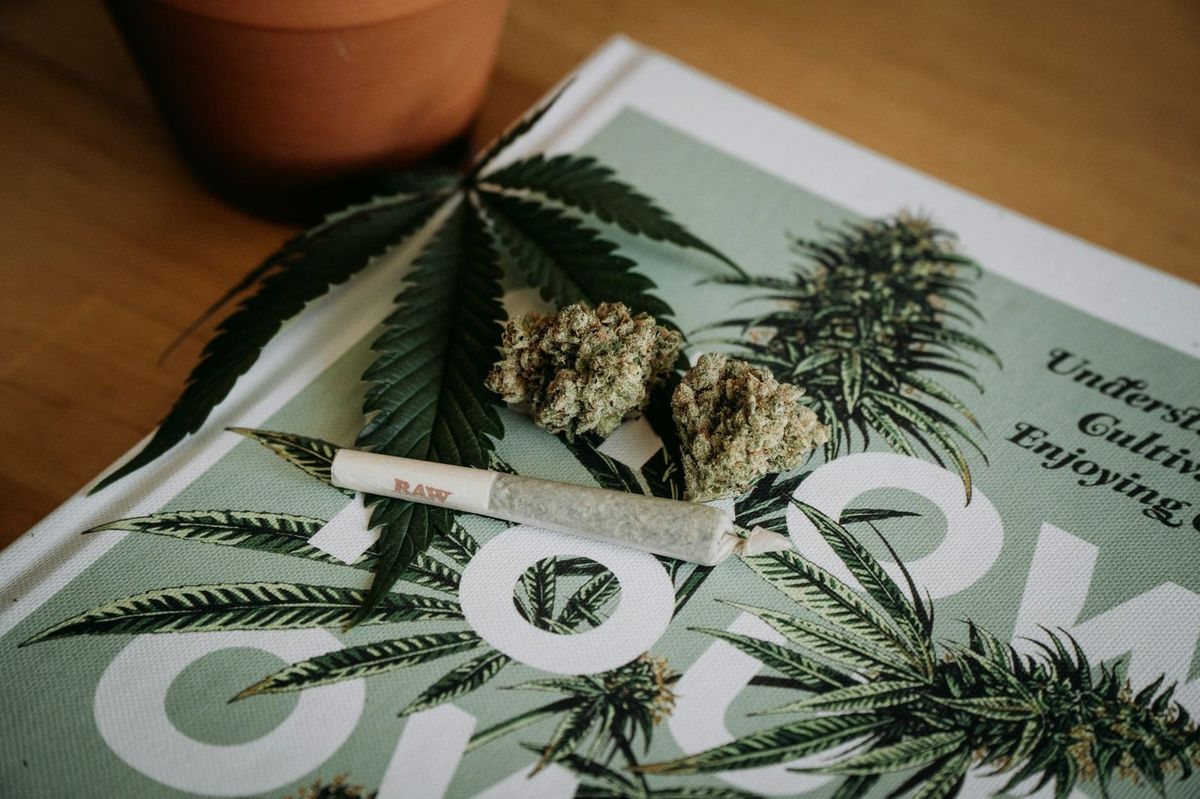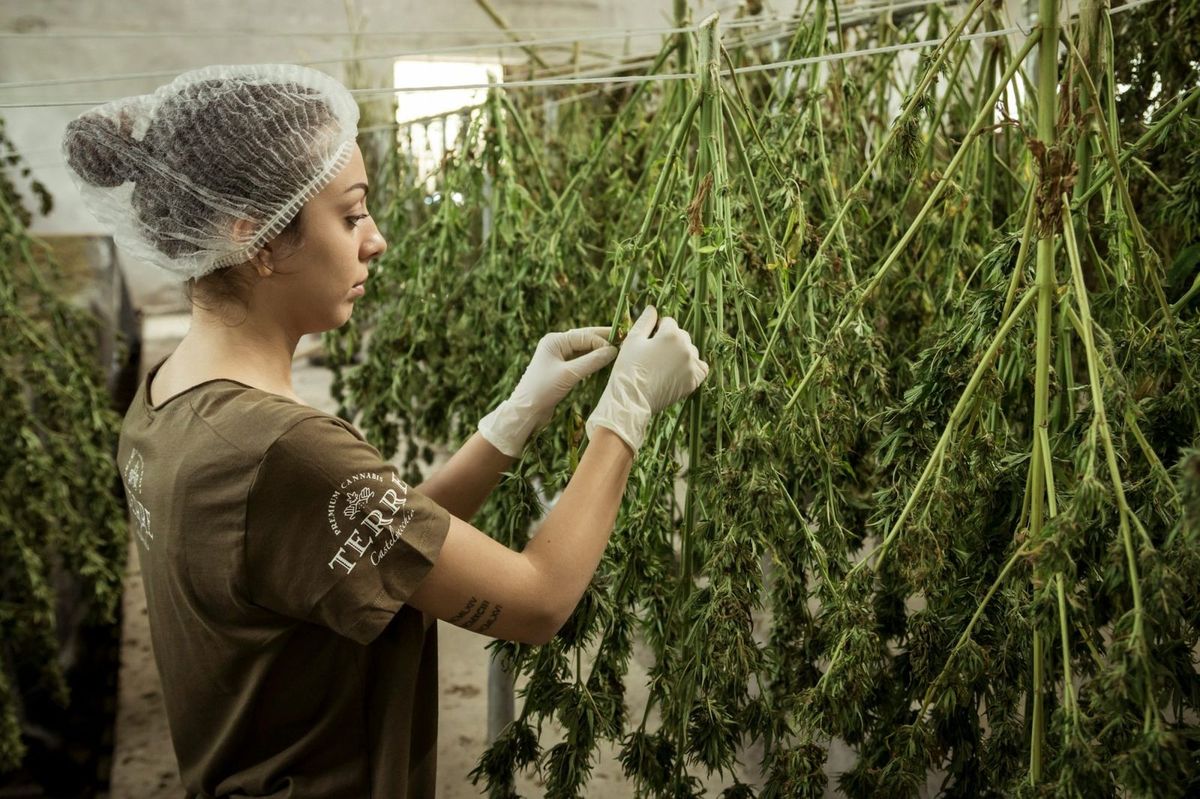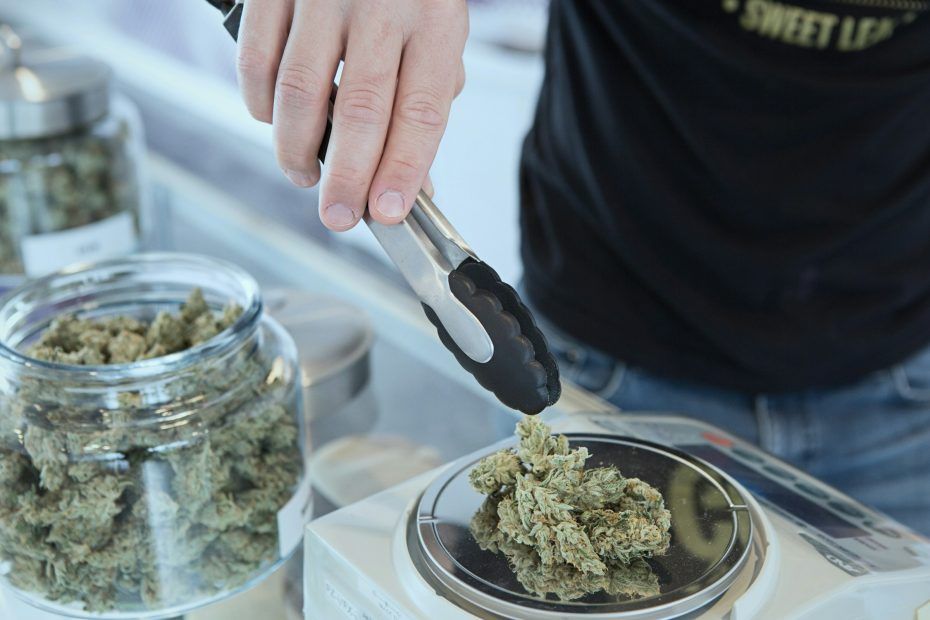Learn how to grow medicinal cannabis in Ecuador
Growing medicinal cannabis can feel overwhelming, especially with all the existing rules and regulations. Fortunately, the legalization movement has made growing this remarkable plant easier. The climate is particularly favorable for cannabis cultivation, and the laws surrounding the production of medicinal cannabis and industrial hemp in Ecuador are becoming more defined every day. This blog will help you understand how to grow medicinal cannabis in Ecuador, including the legalities of growing cannabis in the country. Whether you’re a small farmer or a large-scale operator, staying compliant is critical when cultivating Medicinal Cannabis In Ecuador.
GrowerIQ’s cannabis production software can help you achieve your goals, including learning about the legalities of growing medical cannabis in Ecuador. With GrowerIQ, you can organize and streamline your cannabis grow operations to help you get up to speed quickly on the ins and outs of growing cannabis.
The Science Of Medical Cannabis Nutrition

How Nutrients Affect Cannabinoid Levels in Medicinal Cannabis
Nutritional regimes significantly influence the levels of active compounds, such as THC and CBD. Recent research reveals that the nutritional environment of cannabis plants can alter cannabinoid concentrations, which is crucial for optimizing the therapeutic efficacy of cannabis. Secondary metabolites, including cannabinoids, are often produced as a response to environmental stress.
A 2022 Agronomy study found that controlled potassium stress boosted total cannabinoid content by up to 30% in two medical cultivars. This is because potassium deficiency can stress the plant, leading it to produce more secondary metabolites, including cannabinoids.
The Impact of Stress on Cannabinoid Production
Cannabis plants produce secondary metabolites, such as cannabinoids and terpenes, as a defense mechanism in response to stressors. These metabolites can enhance the plant’s resilience and contribute to its medicinal properties. Nutritional stress, such as deficiencies in essential nutrients like potassium, phosphorus, or nitrogen, can trigger the production of these compounds.
Understanding the relationship between stress and cannabinoid production is crucial for growers who want to maximize their crops’ therapeutic potential.
How to Optimize Nutrients for THC and CBD Content
Growers must ensure that THC and CBD levels meet regulatory standards while maximizing yield, nutrition programs designed to achieve these objectives.
Proper nutrient management helps ensure the plant produces high-quality flower buds with the desired concentration of cannabinoids.
Medicinal Cannabis Laws In Ecuador

Personal Use Decriminalization: A Step Towards Progress
Ecuador has made strides in cannabis reform by decriminalizing personal use of cannabis. Since 2013, possession of up to 10 grams is no longer criminal. Ecuador decriminalized possession of up to 10 g in 2013, but President Daniel Noboa repealed this threshold on November 24, 2023, so any non-medical possession now risks prosecution. Individuals found with this amount will not face criminal penalties. This legal shift helps to destigmatize drug use and reflects a new focus on treating drug use as a health issue rather than a criminal offense.
The decriminalization of personal use also extends to cultivation. Growing cannabis plants for personal use is legal as long as individuals adhere to the legal limits. Home cultivation remains a legal grey area; small therapeutic grows are generally tolerated, but no statute expressly protects them. Always confirm current MAG guidance before planting.
Medicinal Cannabis Laws: A New Dawn
Ecuador took a huge step forward in 2019 when it legalized medicinal cannabis. This legal shift brings the country in line with other nations recognizing the therapeutic benefits of cannabis. The legalization has opened the door for the development of a medicinal cannabis market to benefit patients in need.
Regulations outlining the framework for medical cannabis in Ecuador were established in June 2020 with the publication of the Comprehensive Organic Criminal Code. This legislation includes provisions for the medicinal cannabis legal:
- Cultivation
- Processing
- Distribution
THC Limits: The Less, the Better
Cannabis with less than 1% THC is no longer classified as a controlled substance in Ecuador. Ministerial Agreement No. 109-2020 (MAG) formally set the hemp limit at 1% Δ9-THC on a dry-weight basis, aligning Ecuador with regional norms. This shift in classification removes stringent controls on hemp, allowing for the production and use of low-THC cannabis for a range of medicinal and industrial applications.
Simplify Compliance
Cannabis growers face challenges in managing reporting, documentation, and compliance requirements due to the following:
- Complexity of regulatory frameworks
- Evolving legal standards
- The need for accurate record-keeping in a highly regulated industry
At GrowerIQ, our software aims to provide cannabis growers with a comprehensive solution for:
- Managing their cultivation operations
- Ensuring compliance
- Optimizing quality
- Enhancing efficiency throughout the seed-to-sale process
- Overall simplifying the production process
Providing a Comprehensive Solution
We do this with our software, which offers a range of functionalities to assist cannabis growers, including:
- Seed-to-Sale Tracking
- Quality Management
- Cultivation Planning
Take your growing operation to the next level with GrowerIQ‘s comprehensive solution for cannabis growers.
Related Reading
How To Grow Medicinal Cannabis In Ecuador

Growing medicinal cannabis in Ecuador involves navigating a legal framework established to regulate and facilitate the development of this industry. Here’s a detailed look at the legal aspects of growing medicinal cannabis in Ecuador:
Legal Framework and Licensing
Legalization
Ecuador officially legalized medicinal cannabis in December 2019. This legalization was reinforced by the Comprehensive Organic Criminal Code (published in June 2020), which removed cannabis with less than 1% THC from the list of controlled substances, facilitating its cultivation and use for medicinal purposes.
Regulatory Oversight
The Ecuadorian Ministry of Agriculture and Livestock (MAG) oversees the hemp and medicinal cannabis industries. This ministry is responsible for issuing licenses and ensuring compliance with regulations.
Licensing Process
Application
To grow medicinal cannabis, you must obtain a license from the Ministry of Agriculture and Livestock. The licensing process involves submitting an application that details your cultivation plans, including the following:
- Production scale
- Security measures
- Compliance with environmental regulations
There are 7 types of licenses you can acquire depending on the type of your operation. Most small producers start with License 3 (hemp cultivation); scaling to medicinal flower usually requires License 4 plus a processing permit.
Requirements
The application typically requires comprehensive information about your:
- Cultivation site
- Security protocols
- Adherence to health and safety standards
The Ministry assesses these details to ensure they meet regulatory requirements.
Approval
Once your application is reviewed and approved, you will receive a license to cultivate medicinal cannabis. This license must be renewed periodically and comply with ongoing regulatory requirements to maintain it.
Compliance and Regulations
Site Compliance
The cultivation site must adhere to specific:
- Security
- Sanitation
- Environmental management requirements
This includes securing the cultivation area to prevent unauthorized access and implementing measures to manage pests and diseases.
Record-Keeping
Growers must maintain detailed records of their cultivation activities, including planting, harvesting, and processing. This documentation is essential for:
- Regulatory inspections
- Compliance audits
Digitalize Your Process
You can utilize a tool like GrowerIQ’s seed-to-sale software to make this easy. GrowerIQ’s seed-to-sale software can help streamline the record-keeping process by allowing you to track all your activities in one place.
Quality and Safety Standards
Quality Control
The Ministry of Agriculture and Livestock enforces quality control standards to ensure that medicinal cannabis produced meets safety and efficacy requirements. This includes:
- Testing for cannabinoid content and contaminants
- Adherence to prescribed THC levels.
Health and Safety
Compliance with health and safety standards is crucial. Growers must ensure that their cultivation practices do not harm the environment or pose risks to public health.
Is CBD Legal In Ecuador?

CBD is legal in Ecuador because of a reform in June 2020 that decriminalized the possession and use of cannabis for:
- Therapeutic
- Palliative
- Medicinal purposes
The law excludes non-psychoactive cannabis, or industrial hemp, from control measures. Products derived from industrial hemp, including CBD, can now be regulated and sold legally in Ecuador.
Regulation of Finished Products
The regulatory environment also encompasses finished products derived from hemp, such as CDB. On February 25, 2021, the Agency for Health Regulation, Control, and Surveillance (ARCSA) issued Resolution No. ARCSA-DE-002-2021-MAFG, which provides sanitary technical norms for products intended for human use and consumption.
This resolution defines the THC limits for different categories of products:
- Pharmaceutical Products: Less than 1% THC
- Processed Foods and Supplements: Less than 0.3% THC
- Cosmetics: Less than 1% THC
- Medical Devices and Hygiene Products: Less than 1% THC
What Does The Law Say About Industrial Hemp

Ecuador legalized industrial hemp in late 2020. Before that, there were no laws anywhere in Ecuador regarding hemp or cannabis. In June 2020, the country reformed its criminal code to decriminalize certain activities related to cannabis. The reforms specifically excluded non-psychoactive cannabis from control measures, effectively legalizing industrial hemp.
In October 2020, the Ecuadorian Ministry of Agriculture published regulations for cultivating, processing, and commercializing industrial hemp and its derivatives. The new law establishes seven types of licenses required for industrial hemp activities, including:
- License 1: Importation and commercialization of hemp seeds and cuttings (including seeds for industrial use)
- License 2: Sowing and production of hemp seeds and cuttings (including seeds for industrial use)
- License 3: Hemp cultivation
- License 4: Industrial hemp cultivation
- License 5: Hemp processing and production of hemp derivatives
- License 6: Plant breeding and/or germplasm banks and research
- License 7: Acquisition of derivatives and/or biomass or hemp flower (including biomass for industrial use) for export
Related Reading
Market Potential Of Medicinal Marijuana In Ecuador

Ecuador’s medical cannabis market is projected to reach a revenue of approximately $231.30 million by 2024. This market is expected to grow at an annual rate of 1.29% from 2024 to 2029, resulting in a projected market volume of $246.60 million by 2029. Although this growth rate is modest compared to leading markets like the United States, which are projected to generate $14.53 billion in 2024, it still represents a positive trajectory for Ecuador’s medical cannabis sector.
Per capita revenue in Ecuador’s medical cannabis market is also expected to increase significantly in the coming years. For 2024, the market will generate approximately $19.15 per person. This figure highlights a developing market with growing consumer interest, but still at an early stage compared to more established markets.
Why Is Ecuador’s Medical Cannabis Market Growing?
Ecuador’s medical cannabis market is on the rise thanks to a combination of the following:
- Shifting customer preferences
- Regulatory developments
- Favorable local conditions
- Macroeconomic factors
Shifting Customer Preferences
Ecuadorian consumers are increasingly seeking alternative medical solutions, contributing to a rise in interest in medical cannabis. The growing awareness of the potential health benefits of cannabis, coupled with a preference for natural remedies and personalized healthcare, is driving demand for cannabis-based treatments.
Regulatory Developments and Market Trends
The legalization and regulation of medical cannabis in Ecuador are pivotal factors influencing market growth. Investment increases and local production facilities are established as regulations become more evident.
This is facilitating the development of a domestic supply chain and enhancing patient access to medical cannabis. Collaborations between healthcare professionals and cannabis companies are also on the rise, promoting education and integration of medical cannabis into standard treatment options.
Favorable Local Conditions
Ecuador’s climate and biodiversity provide ideal conditions for cannabis cultivation. The country’s diverse ecosystems support the growth of high-quality cannabis strains, positioning Ecuador as a potential hub for medical cannabis production.
Additionally, the cultural acceptance of plant-based remedies in Ecuador contributes to a positive attitude towards medical cannabis, further supporting market growth.
Macroeconomic Factors
The Ecuadorian government’s progressive stance on medical cannabis and efforts to create a clear regulatory framework is essential for market expansion. These regulatory developments foster investor confidence and encourage further investment in the sector.
The economic benefits of medical cannabis, such as job creation and revenue generation, are driving interest and supporting the market’s growth.
Uncomplicate Your Cannabis Production Today With GrowerIQ!
Growing cannabis isn’t easy. From pest problems to mold to nutrient deficiencies, cultivators face a host of challenges that can impact the growth and health of their plants. Cultivators also have to deal with the cannabis industry’s complex regulations.
These rules often dictate how cannabis is grown, processed, and sold. They can change from year to year or even month to month. In some cases, they can vary by location, creating a patchwork of regulations that can be hard to navigate.
Helps Grow & Manage the Growing Process
GrowerIQ helps cannabis cultivators manage the growing process and the industry’s regulatory requirements for medicinal cannabis in Ecuador. Our software provides a comprehensive solution for growers, allowing them to effectively and efficiently manage their operations from seed to sale.
Related Reading
Streamline Cannabis CultivationRecommended For You
Unleashing the Potential of Cannabis Compliance Consulting for Industry Pioneers
December 16, 2025Unmasking Nature’s Signals: Decoding the Secret Language of Cannabis Leaf Problems
December 11, 2025GrowerIQ’s Rapid Harvesting Tool: The Fastest, Most Accurate Way to Capture Cannabis Harvest Data
December 11, 2025About GrowerIQ
GrowerIQ is changing the way producers use software - transforming a regulatory requirement into a robust platform to learn, analyze, and improve performance.
To find out more about GrowerIQ and how we can help, fill out the form to the right, start a chat, or contact us.

